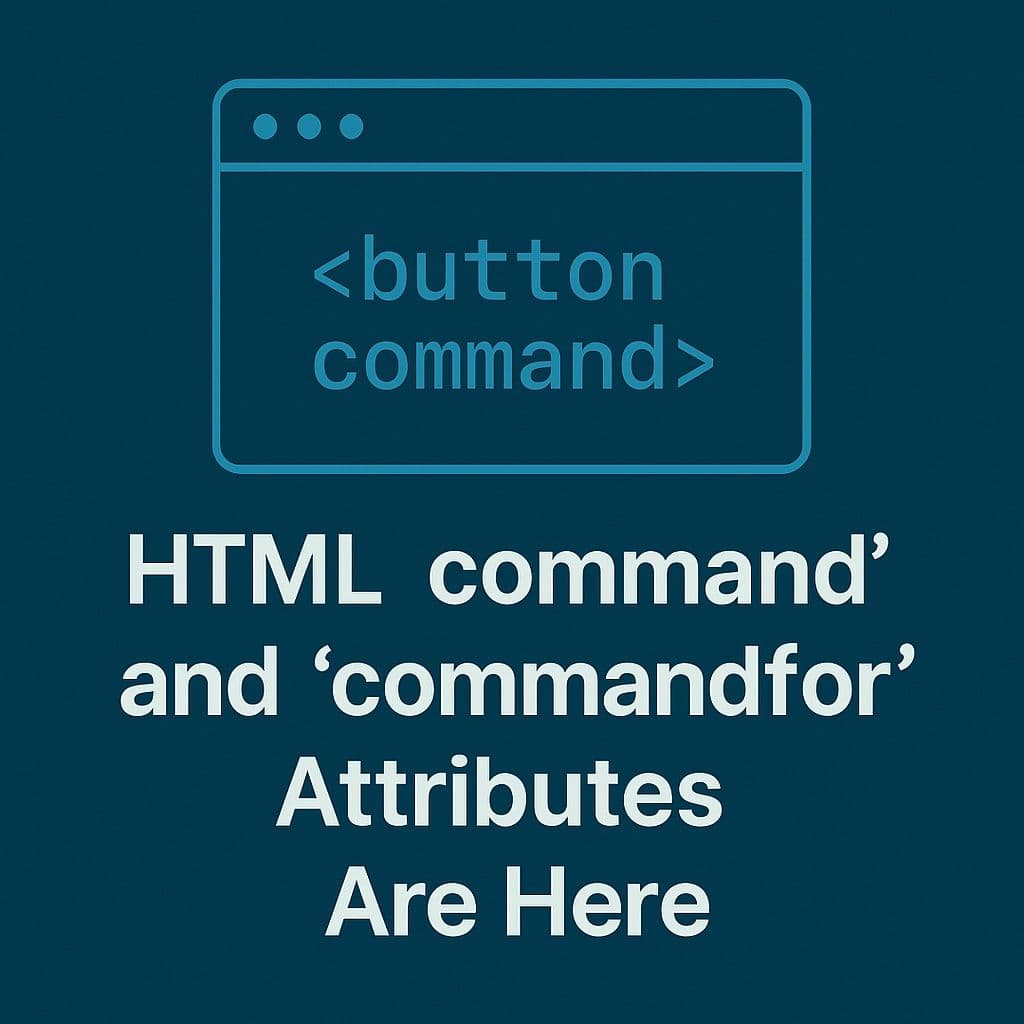
HTML command and commandfor Attributes Are Here — And They’re Kind of a Big Deal
If you’ve ever found yourself entangled in JavaScript event listeners, context-aware handlers, and a sprinkle of spaghetti code, this one’s for you.
Say hello to the new HTML command and commandfor attributes — fresh out of the Chrome dev oven. These declarative gems let you wire up UI behavior in a way that’s simple, portable, and surprisingly powerful.
📰 Read the full Chrome announcement here
What Are command and commandfor?
At their core, these attributes are about decoupling your UI markup from the logic that powers it.
- command defines a reusable action or “intent” that you can invoke from multiple UI elements.
- commandfor lets elements like buttons bind declaratively to that command and target a specific element by its id.
⚠️ These attributes are only available on <button> elements (as of Chrome 124). They’re not valid on <a>, <div>, or other elements. This is part of the Invoker Commands API, which is currently limited to buttons.
No need for addEventListener on each button or wiring up logic separately — just pure HTML and a single listener on the target element.
Why This Matters
The command and commandfor attributes offer a semantic, declarative way to attach UI actions to elements — and it plays nicely with any stack that outputs HTML, including:
- PHP templates
- Node.js/Express
- HTMX and Alpine.js
- Static site generators
- CMS systems that spit out HTML
Because you’re working with standard HTML and events, it’s framework-agnostic. You don’t need a JavaScript bundler or complex frontend setup to get started.
Benefits:
- Define logic once, trigger from multiple buttons
- Auto-wire context (the commandfor target gets the event)
- Easier testing and progressive enhancement
- Keyboard accessible by default (spacebar/enter on buttons)
A Sneaky Productivity Boost
Let’s say you have an admin panel with multiple “Approve” buttons:
Here’s a basic example:
Now all your buttons just point to the right target with a commandfor, and the logic stays tidy on the receiving element. No data-* attributes. No bubbling mess.
Compatibility and Limitations
- Supported in Chrome 124+
- Not yet supported in Firefox or Safari
- You can build polyfills or fallbacks using data-command + manual listeners
Key Things to Know
- command is a string, often prefixed with -- to avoid conflicts
- commandfor must match the id of the target element
- The button dispatches a CommandEvent on the target
- You can listen for the command event on the target and call event.preventDefault() if needed
Final Thoughts
The command and commandfor attributes feel like one of those “wait, why didn’t we always have this?” moments in HTML evolution. They reduce boilerplate, encourage clean markup, and play nicely with everything from handcrafted HTML to full-stack frameworks.
If you’re working in a platform that generates HTML — or just tired of wiring up every button manually — this is worth trying today (at least in Chrome). Future-you will thank you.
Bonus tip: These attributes are particularly handy for CMS plugins, admin panels, and static sites where you want structure without JS complexity.
Reference